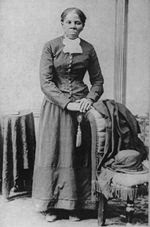The devil tempts but doesn’t force. (Guyana)

Water and chaos were all that existed in the beginning, the Yoruba say. Obatala, one of the orishas (lesser deities) was losing patience with those who didn't share his dream of taming the disorder below heaven.
“What is the use of our powers,” Obatala asked Oludamare, the Creator-God “if we don’t ever use them?”
“The power is yours. You can do what you want with it,” Oludamare said.
“I want to create a world out of chaos,” Obatala said.
“Done. You have my blessing,” Oludamare said. “Just make sure you talk to my son who knows the future. He will tell you what you need to do to succeed.”
"I am on my way, Oludamare. Thanks."
"And stay away from....."
"I know, I know. I can't thrive and drink," Obatala said.
On the advice of Oludamare's son and other orishas, Obatala collected maize, a palm nut, a chain of gold, a five-toed chicken, and a calabash of sand. In addition he carried an egg so sacred that he wrapped it in his shirt, close to his chest.
Seven days after Obatala left to climb down the chain of gold toward water and chaos, no one had heard from him. So Oludamare sent another orisha, Oduduwa, in search of Obatala. Oduduwa, found Obatala drunk on palm wine from a heavenly feast. When Oduduwa could not rouse Obatala, he took the chicken, the palm seeds, and the calabash and completed the journey.
Oduduwa scattered sand from the calabash over the water and he dropped the chicken on the sand. The chicken scratched the sand, and vast land sprang up wherever the sand was scattered. Oduduwa then planted the palm nut in the earth, and from it was created the Yoruba kingdom of Ile-Ife.
Obatala was furious when he found out that Oduduwa took his plan and acted on it. Obatala's heart beat so hard the sacred egg cracked. From the egg flew a sacred bird that dipped and whirled till it created hills and lowlands. Obatala walked around, scattering maize seeds that grew quickly in the new land. Seeing these changes made him even more irritated with Oduduwa, so he sought Oludamare's help.
“Oludamare,” Obatala asked, “Do you think it is fair that Oduduwa gets the credit for my idea?”
“Surely you haven't forgotten why....?” Oludamare asked.
“I just took a little sip of the palm wine to celebrate," Obatala said. "It won’t happen again.”
“There is still work for you to do. If you are up to it.”
“I have learned my lesson. I won’t fail this time.”
“You can use your powers to create men and women,” Oludamare said.
“How do I do that?” asked Obatala.
“Use clay to create forms that look like the gods and the orishas,” Oludamare said, “and I will do the rest.”
Obatala molded clay into different shapes and left them to bake in the sun. He made lots of these bodies and got so thirsty that he took a break. He checked out the newly-grown palm trees and tested some juice to see if it had fermented as yet. He took one sip and then another, and then many more.
When he returned to molding the clay, his eyes and hands were unsteady, but he still thought all the bodies were beautiful. As a result, when Oludamare breathed fireballs of life into these forms, some could not see or hear, walk or even stand.
When Obatala realized what he had done, he promised himself that he would never again touch strong drink. He also pledged to protect those who suffered because of his carelessness.
Until today, Obatala is the protector of persons with disabilities. His followers may eat palm oil, but they must never ever touch palm wine.






















